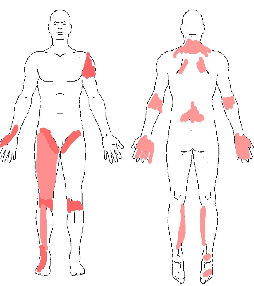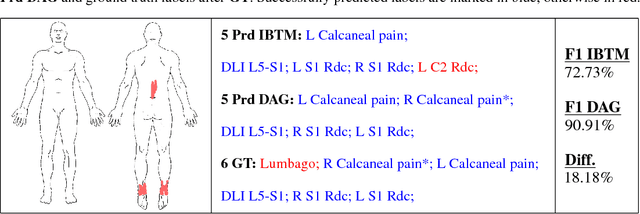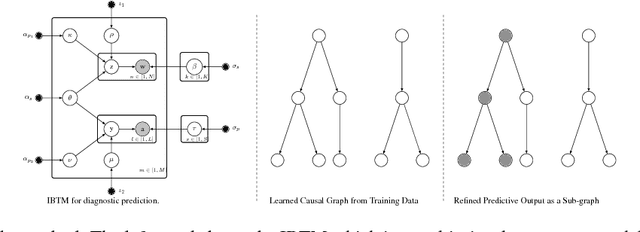Bo C. Bertilson
Causality Refined Diagnostic Prediction
Nov 29, 2017



Abstract:Applying machine learning in the health care domain has shown promising results in recent years. Interpretable outputs from learning algorithms are desirable for decision making by health care personnel. In this work, we explore the possibility of utilizing causal relationships to refine diagnostic prediction. We focus on the task of diagnostic prediction using discomfort drawings, and explore two ways to employ causal identification to improve the diagnostic results. Firstly, we use causal identification to infer the causal relationships among diagnostic labels which, by itself, provides interpretable results to aid the decision making and training of health care personnel. Secondly, we suggest a post-processing approach where the inferred causal relationships are used to refine the prediction accuracy of a multi-view probabilistic model. Experimental results show firstly that causal identification is capable of detecting the causal relationships among diagnostic labels correctly, and secondly that there is potential for improving pain diagnostics prediction accuracy using the causal relationships.
Diagnostic Prediction Using Discomfort Drawings
Dec 05, 2016

Abstract:In this paper, we explore the possibility to apply machine learning to make diagnostic predictions using discomfort drawings. A discomfort drawing is an intuitive way for patients to express discomfort and pain related symptoms. These drawings have proven to be an effective method to collect patient data and make diagnostic decisions in real-life practice. A dataset from real-world patient cases is collected for which medical experts provide diagnostic labels. Next, we extend a factorized multimodal topic model, Inter-Battery Topic Model (IBTM), to train a system that can make diagnostic predictions given an unseen discomfort drawing. Experimental results show reasonable predictions of diagnostic labels given an unseen discomfort drawing. The positive result indicates a significant potential of machine learning to be used for parts of the pain diagnostic process and to be a decision support system for physicians and other health care personnel.
Diagnostic Prediction Using Discomfort Drawings with IBTM
Sep 13, 2016



Abstract:In this paper, we explore the possibility to apply machine learning to make diagnostic predictions using discomfort drawings. A discomfort drawing is an intuitive way for patients to express discomfort and pain related symptoms. These drawings have proven to be an effective method to collect patient data and make diagnostic decisions in real-life practice. A dataset from real-world patient cases is collected for which medical experts provide diagnostic labels. Next, we use a factorized multimodal topic model, Inter-Battery Topic Model (IBTM), to train a system that can make diagnostic predictions given an unseen discomfort drawing. The number of output diagnostic labels is determined by using mean-shift clustering on the discomfort drawing. Experimental results show reasonable predictions of diagnostic labels given an unseen discomfort drawing. Additionally, we generate synthetic discomfort drawings with IBTM given a diagnostic label, which results in typical cases of symptoms. The positive result indicates a significant potential of machine learning to be used for parts of the pain diagnostic process and to be a decision support system for physicians and other health care personnel.
 Add to Chrome
Add to Chrome Add to Firefox
Add to Firefox Add to Edge
Add to Edge